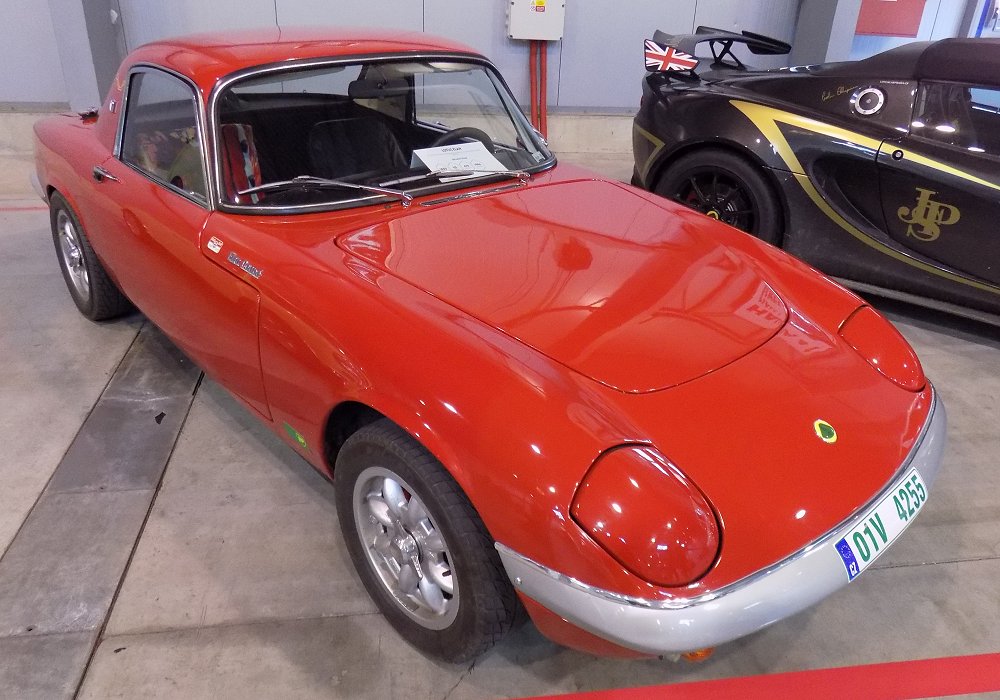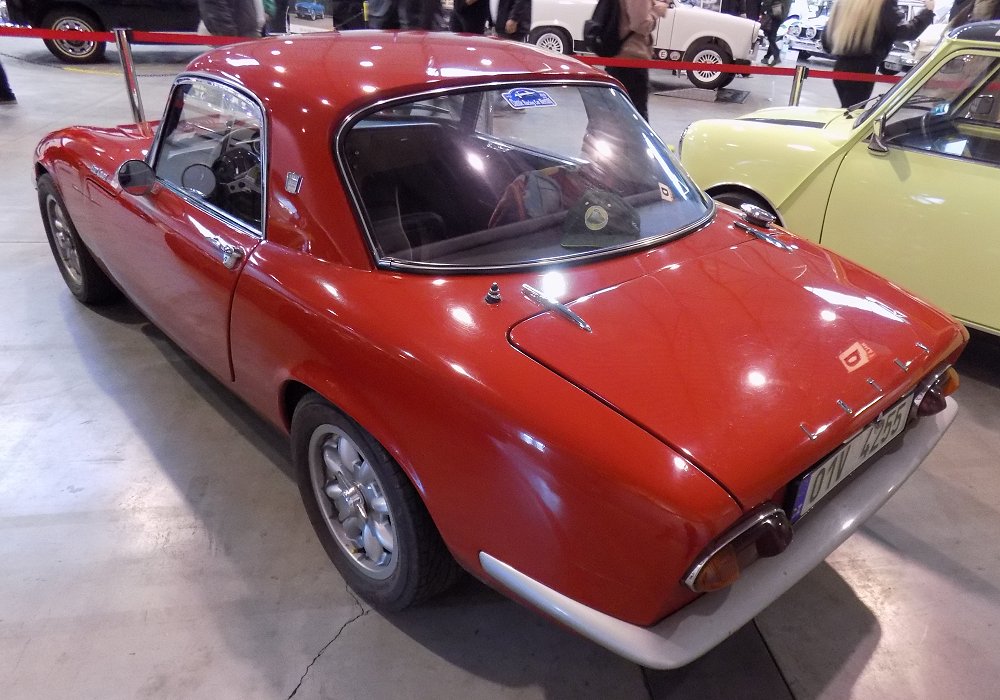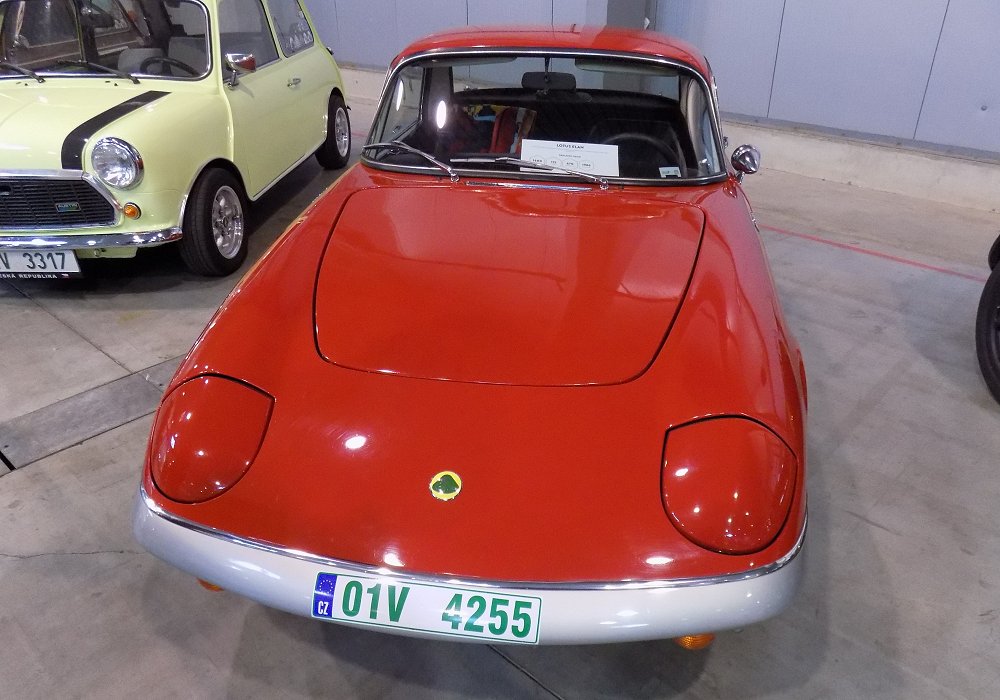Description
The Lotus Elan S2 Coupé SE was one of the most refined and desirable evolutions of Colin Chapman’s legendary lightweight sports car. Introduced in 1965 as part of the Series 2 (S2) range, it represented the perfect balance between the purity of the early Elans and the improved comfort and usability that Lotus gradually introduced as its reputation grew. The S2 Coupé SE (Special Equipment) combined the Elan’s trademark agility and precision with extra power, a touch more luxury, and the distinctive grace of a fixed-roof grand tourer. It was the car that proved Lotus could build not only a brilliant driver’s machine but also a genuinely sophisticated sports car.
The Elan S2 built upon the foundations of the original 1962 model, which had astonished the motoring world with its combination of lightness, performance, and handling finesse. Like its predecessor, the S2 employed a steel backbone chassis clothed in a sleek fiberglass body, an ingenious design that provided both strength and low weight. This backbone structure, shaped like a deep, central spine branching into a Y beneath the engine bay, delivered remarkable torsional rigidity without the bulk of a traditional frame. The fiberglass body, molded in two main sections and bonded together, weighed just over 100 kilograms, keeping the car’s total mass to around 680 kilograms—extraordinarily light even by today’s standards.
Visually, the S2 retained the same compact, flowing proportions that made the Elan so distinctive: a long, curvaceous bonnet, short tail, and a perfect sense of balance between front and rear. The Coupé version, introduced in 1965, replaced the roadster’s removable hardtop with a permanent fixed roof, giving the car a more cohesive silhouette and greater refinement. The new roofline was beautifully integrated, with slender C-pillars and a gently curved rear window that enhanced aerodynamics and visibility. The design gave the Coupé a slightly more mature, elegant appearance compared to the playful charm of the convertible, positioning it as a lightweight grand tourer rather than a pure roadster.
The SE version—the “Special Equipment” package—brought meaningful performance improvements. Under the bonnet lay the now-famous 1,558 cc Lotus Twin Cam engine, based on the Ford Kent block but equipped with Lotus’s aluminum twin-overhead-camshaft cylinder head. In SE specification, it produced 115 horsepower thanks to higher compression, modified cam profiles, and twin Weber or Dell’Orto carburetors. This engine was a masterpiece of engineering balance, combining free-revving eagerness with smooth torque delivery. Mated to a close-ratio four-speed gearbox, it allowed the lightweight Elan S2 SE to sprint from 0 to 60 mph in just 7 seconds and reach a top speed of around 120 mph—remarkable performance for a 1.6-litre car in the mid-1960s.
The Elan’s handling, already world-class in its base form, was even more rewarding in SE trim. The suspension used unequal-length wishbones and coil springs at the front, with Lotus’s signature Chapman struts at the rear—a setup derived from the company’s Formula racing experience. The combination produced superb ride quality and precise control. The rack-and-pinion steering was light, direct, and incredibly communicative, delivering a level of feedback that became the Elan’s defining trait. Four-wheel disc brakes provided confident stopping power, and the car’s perfectly balanced weight distribution made it agile yet forgiving, capable of astonishing cornering speeds with a fluidity that few cars, even decades later, could rival.
Inside, the Elan S2 Coupé SE offered a level of refinement that set it apart from its minimalist predecessors. The cabin featured soft trim, a full-width wooden dashboard with clear Smiths instruments, and improved seats offering more support for long-distance driving. While still simple by modern standards, it felt warmer and more inviting than earlier Lotus interiors. The fixed roof also reduced wind noise and made the car quieter and more comfortable at high speed, reinforcing its appeal as a true driver’s GT.
On the road, the S2 SE delivered an experience of rare intimacy and precision. The Twin Cam engine sang with a crisp, metallic note as it climbed the rev range, eager to respond to the slightest touch of the throttle. The gearshift was short and mechanical, the steering light yet exact, and the suspension soaked up rough surfaces without dulling feedback. The car felt alive beneath the driver, darting through corners with extraordinary grace and composure. Every input—throttle, brake, steering—produced an immediate and satisfying reaction. It wasn’t about raw power, but about the harmony between machine and driver, the sense that the car anticipated every move.
The fixed-roof Coupé gave the Elan a new dual personality. It retained the playfulness and delicacy of the open version but added a degree of maturity. It could be driven all day without fatigue, its aerodynamics improving stability at high speed. It felt more civilized, but never detached; even on long journeys, it remained a pure driver’s car, rewarding precision and finesse.
Production of the Elan S2 continued until 1966, when it was succeeded by the S3, which introduced further refinements but retained the same essential character. The S2 Coupé SE remains one of the rarest and most sought-after variants of the early Elans, its combination of performance, elegance, and historical importance making it a favorite among collectors and enthusiasts.
In retrospect, the Lotus Elan S2 Coupé SE represents the Elan at its most balanced point of evolution—before added complexity and luxury began to creep in. It captured the essence of Colin Chapman’s philosophy: the pursuit of lightness, responsiveness, and mechanical purity. Decades later, its influence can still be felt in nearly every lightweight sports car that followed, from the Lotus Elise to the Mazda MX-5.
The Elan S2 Coupé SE was more than a sports car—it was an experience of motion distilled to its purest form. Light, precise, and endlessly engaging, it stands as one of the finest examples of what a small British sports car could achieve when designed by engineers who truly understood the art of driving.




